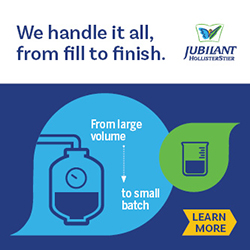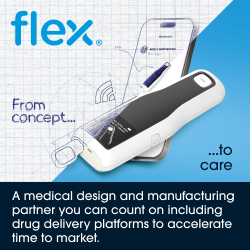A Tough Pill to Swallow
A Tough Pill to Swallow
Patient preference and compliance are becoming increasingly important differentiators in a crowded pharmaceutical marketplace. To achieve effective product positioning and differentiation against competitors, companies must carefully think through the needs of target patient segments. A few of these needs include a focus on ease-of-use for patients and caregivers, especially as it relates to the delivery method.
Many pharmaceutical companies gravitate toward oral formulations when introducing a new product for a number of reasons; companies tend to have the most experience with this delivery method or they haven’t considered the alternatives, which may prevent a product from realizing its full potential. For any orally administered treatment regimens, if the patient cannot swallow the pill and keep it down, the product’s effectiveness is diminished.
There are multiple factors why a patient may experience difficulties swallowing pills. Even without a diagnosed illness, more than 65% of the elderly population suffers from dysphagia.1 Others, simply are unable to self- medicate – 40% of people who enter nursing homes do so in part for this reason.2 Even for those who receive assistance, 23% of caregivers report problems with medication management.3

A Patient-Friendly Alternative
These challenges all point to a strong need in the marketplace for alternative forms of drug delivery. One method of delivery that has been shown advantageous in these situations is the transdermal patch. This form of drug delivery has a number of benefits compared to oral pills. It can improve efficacy due to its ability to avoid first-pass metabolism and maintain a steady blood level of medication. Compared to the peak and trough effect seen with oral delivery of medication, this can be a strong advantage for many conditions. Depending on the technical characteristics of the drug, transdermal delivery can also be used to offer sustained release of medication for up to 7 days.
In addition to these factors, patients and caregivers often find it easier to stay compliant with transdermal therapy with no need to swallow a pill. It is also far simpler to confirm that a dose has been given – patients don’t need to remember if they’ve swallowed a pill if they can visually see the patch on their skin. In nursing home settings, for instance, it is not uncommon for caregivers to write with a marker on the patch itself to indicate the time and date the patch was applied. An average nursing home patient swallows 13 pills each day, which can be difficult to keep track of, especially when caregivers are managing multiple patients at once.4 As the aging population continues to put pressure on healthcare systems to deliver the best possible care, addressing the caregiver burden becomes increasingly important.
Success With Transdermal Delivery
One relatively recent transdermal product introduction exemplifies how this method of treatment has gained popularity due to its unique suitability for the target therapeutic application and its patient-friendly characteristics.
The success of transdermal delivery can be seen with SANCUSO® (granisetron transdermal system), marketed by ProStrakan.5 Granisetron has been available in a tablet and an IV injectable form for a number of years indicated to treat chemotherapy-induced nausea and vomiting. From the patient’s perspective, both these delivery methods pose challenges. An IV injection requires a hospital or infusion center visit, causing the patient inconvenience and potential administration costs. An oral dosage form is somewhat counterintuitive when delivering an antiemetic. Transdermal delivery was a clear choice for an alternative delivery system as patient preference and ease of use were top of mind for ProStrakan in developing the product.
When expanding delivery options, most pharmaceutical companies run into challenges during development and the regulatory process. To alleviate these obstacles, ProStrakan turned to 3M Drug Delivery Systems for the commercial manufacture of SANCUSO®. Since partnering, ProStrakan has been able to take advantage of 3M’s laboratory resources and international regulatory expertise, as well as its reliable manufacturing facilities, and has laid the foundation for the product’s expansion into new territories.
Investing in Differentiation
As companies seek to differentiate their products and win patient preference, a painless and easy delivery system can be a powerful tool in a crowded marketplace. Given demographic trends impacting the healthcare industry, pharmaceutical companies that invest in patient-friendly delivery systems now will be well positioned to meet both current and future demands for innovative patient-centric treatments.
For more information on 3M’s various technologies and services, click here!

References
1. Mintel: Consumer Trends 2011-2016; Glencoe Family Health Nursing Home VOC, World Journal of Pharmaceutical Research Volume 1, Issue 3, 576-590. Review Article ISSN 2277 – 7105, 2004 U.S. Bureau of the Census.
2. Cost of Care– Caregiving Facts, Frontline, PBS; Palliative Care for Older People: Better Practices, WHO 2012; China Pharmaceutical Association, 2006.
3. Cost of Care– Caregiving Facts, Frontline, PBS; Palliative Care for Older People: Better Practices, WHO 2012; China Pharmaceutical Association, 2006.
4. 3M Drug Delivery Systems Voice of Customer research. Data on file.
5. SANCUSO ® is a registered trademark of ProStrakan Group Inc.
Total Page Views: 1270


















